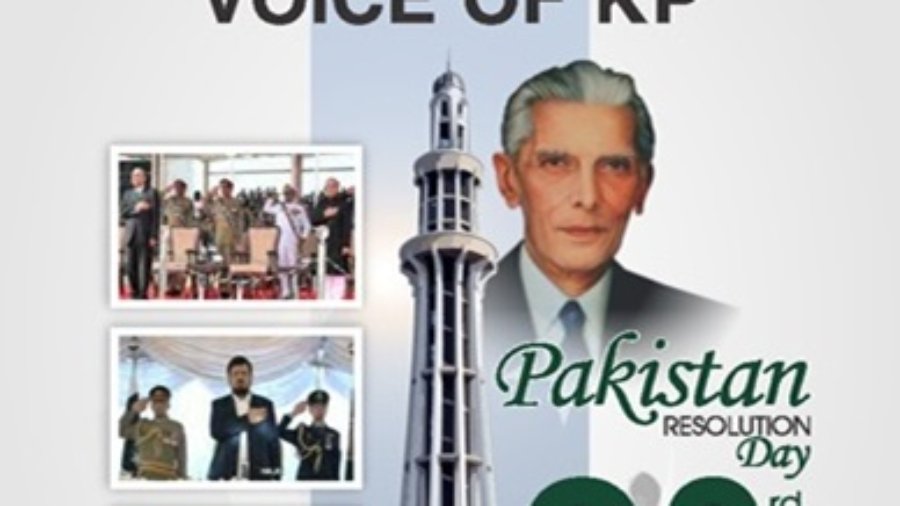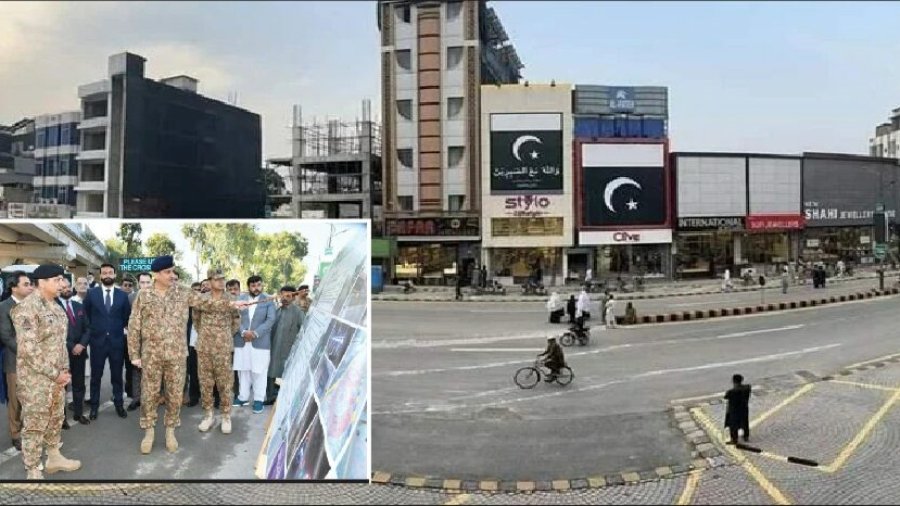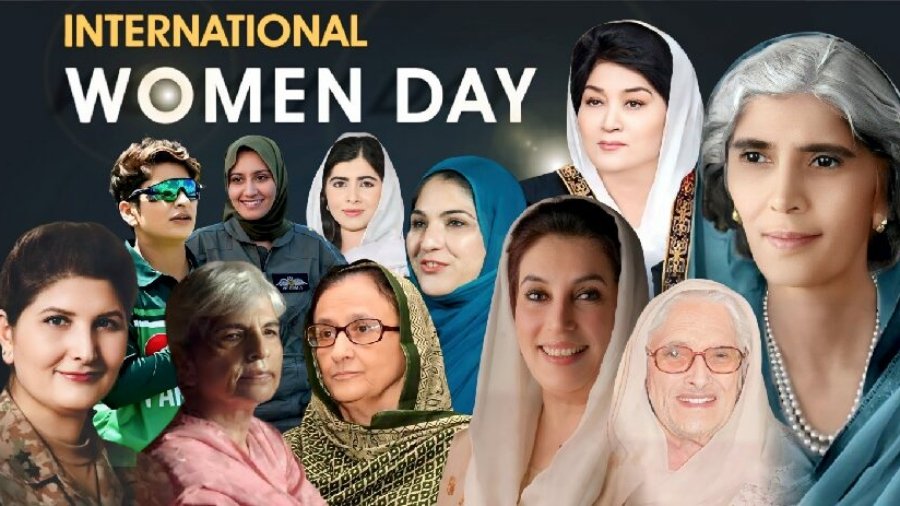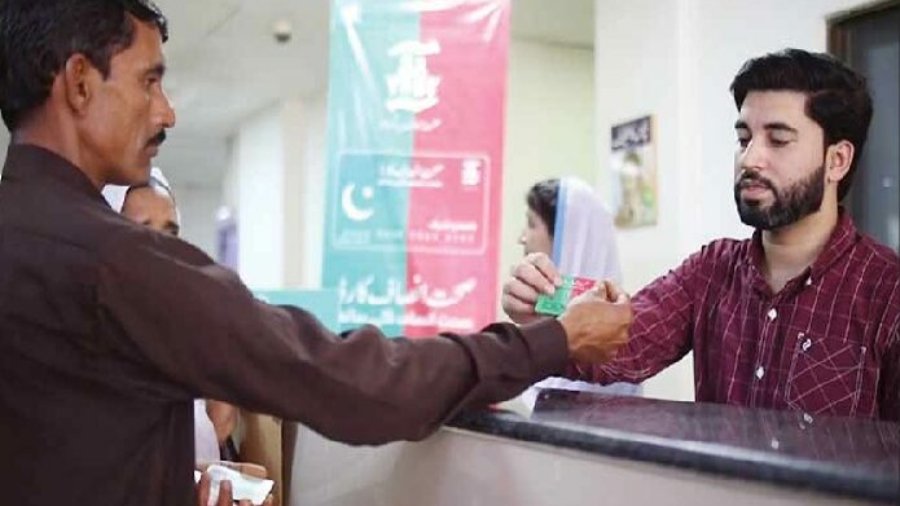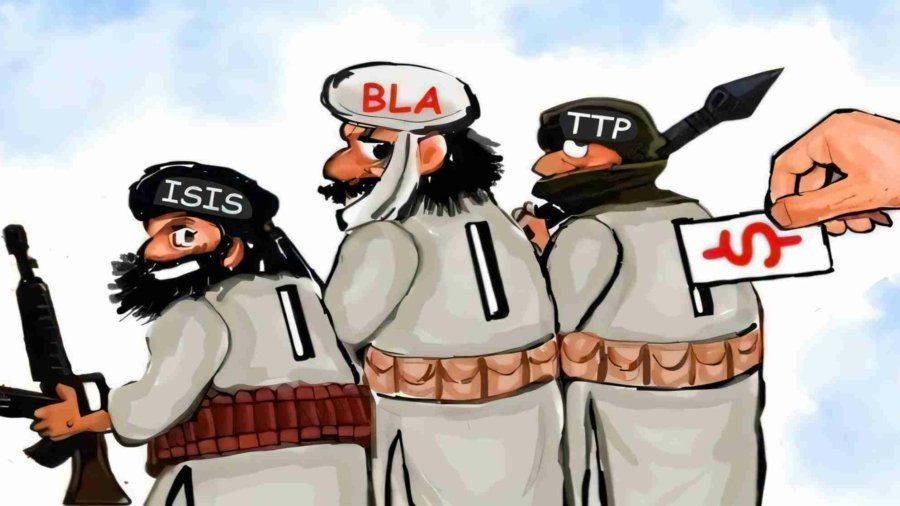Pak Army Role in Socio-Economic Development
Pakistan has successfully transited through the general election (GE-2024) process without any security issues despite heightened threat matrix, particularly in KP. Terrorists had threatened the peace and stability in the province days before election day. The Professionalism of Pakistan Army and other law enforcement agencies under the visionary leadership of COAS Gen Syed Asim Munir ensured safety of hundreds of millions of Pakistanis who came out to participate in their democratic right. Pakistan Army maintained complete vigilance across the country before polling day and quietly prevented many threats by preventing free movement of miscreants.
Effective border management by Pakistan Army and inter-agency coordination with sister forces made peaceful elections possible. It also exhibits a strong and courageous character of Pakistanis, as a nation, effectively rejected the narrative of hatred, divide and terror spread by anti-state forces both from within and abroad.
Pakistan Army is considered the guardian of the motherland which ensures both internal and external security. Nonetheless, Pak Army goes beyond the line of duty in nation-building, along with its primary responsibility of ensuring security, to ease out lives of common Pakistanis. Recently, many such incidents came to the fore where the role of Pakistan Army as a social enabler was noticed.
Helping affected individuals and families of landmines, laid by terrorists, is one such example where Pakistan Army, in collaboration with (ex)FATA Displaced Welfare Organization (FDWO), has been actively involved in rehabilitation efforts of landmine victims. More than 1000 families are being catered for under this collaboration. In this connection, a ceremony was held in Peshawar where more than 50 individuals affected by landmines including 10 women were honored for their resilience and strength.
Corps Commander Peshawar Lt. Gen. Hasan Azhar Hayat was the chief guest at this event. He distributed financial aid in the form of cash and laptops to the victims, showcasing the collaborative efforts of the military and civil society in addressing the needs of those affected. Efforts and cooperation of Pakistan Army were highly praised and appreciated by the participants.
Apart from financial help, Pakistan Army is also helping FDWO to procure bionic arms and legs for landmine victims so that their quality of life can be improved. Pakistan Army medical corps specialists are providing training to victims to use these artificial arms and legs. Regular eye camps, medical camps and disaster relief programs in remote areas in KP and Baluchistan are also part of Pakistan Army’s efforts to serve the nation.
Art and culture play a key role in promoting the soft image and cultural prowess of the country. Here too, Pakistan Army, is making significant contributions to KP. Recently, Commander XI corps, has initiated multiple projects to preserve rich heritage of the Peshawar city and to promote local talent in arts and crafts. To this end, a project for rejuvenation to re-do historic Qisa Khawani Bazar has been initiated. Similar efforts of beautification and renovation work are being made in business hub known as ‘Saddar bazaar’ and Peshawar cantonment. This work started in November 2023.
“The city where there was an atmosphere of bomb blast and fear a few years ago, now there is prosperity and development will take place without any hindrance.” These were the remarks of Commander XI Corps when he initiated this beautification drive.
Pakistan Army is well aware of the tourism potential of KP and is also cognizant of the need for revival of communication facilities in the province to boost tourism industry. To contribute to provincial toruism, Pakistan Army, in collaboration with Pakistan Railways and Frontier Corps North, has initiated a plan to revive the historic Mardan – Takht Bhai Railway track to exploit tourism potential of Takht Bhai. A similar plan is under consideration for Peshawar – Landi Kotal portion as well. Much-needed railway connectivity to these historical sites will surely attract domestic as well as international tourists to KP.
The biggest outcome of Pakistan Army’s continued efforts in KP and NMDs has emerged in growing national cohesion across all factions of society. Despite heated debates, the peaceful process of election is a pleasant reminder of how Pakistan sets itself apart from India by refusing to support extremist groups. The Pakistani electorates have rejected radical religious & ethnic groups, demonstrating that such polarizing narratives are irrelevant in the nation’s democratic environment. Ethnic nationalist, religious cards no more work. This is going to have a lasting positive impact on national unity and it all began with Pakistan Army’s efforts to confront all anti-state and anti-society elements two decades ago who remain ever ready, always vigilant and committed to go the extra mile in service of the nation. The efforts of Pakistan Army in KP and NDMs towards peace and stability, nation-building and socioeconomic uplifting must be highlighted with gratitude as these efforts have become textbook examples for countries.
Education Crisis in Khyber Pakhtunkhwa
8th March: The Status of Women Rights in Pakistan
LAILA SADAF
The famous quote “Women hold up half the sky”, attributed to Chinese Communist Party leader Mao Zedong, underscores the crucial role of women in the development of a state. International Women’s Day is celebrated every year on 8th March to revisit the achievements of women as an equal member of society and to highlight the longstanding struggles of women to achieve equal rights. It is a day for women to ask for concrete solutions to their socio-economic, political and personal rights through rallies and conventions.
The origin of International Women’s Day can be traced back to the early 20th century when women’s movements started gaining momentum, initiated from the West. The first National Women’s Day was observed in the United States on February 28, 1909, to commemorate the garment workers’ strike in New York City. The following year, Socialist International convened Women’s Day to promote women’s suffrage and recognition of women’s contributions in all spheres.
In Pakistan, the annual conference of the newly formed Fem Consortia comprising 12 women’s rights organizations and five alliances from across the country was held, reflecting upon topics like women in politics, adolescent girls, working women and climate change and women. It was acknowledged in the conference that a lot of progress has been made in the status and empowerment of women in the light of increased participation of women in politics and other areas of professional life. Other glimmering areas of progress in Pakistan concerning Gender Equality include education, economic participation and political representation for both males and females.
Although the gap persists, female enrolment in primary education has climbed to 97%, exceeding the national target. This surge signifies a crucial step towards empowering future generations ultimately. Economic participation is yet another area of interest. Though the female labour force participation rate remains low at 22%, initiatives like the Benazir Income Support Programme have supported women’s economic agency, empowering them to break free from the shackles of poverty. Yet many hurdles continue to obstruct the way forward.
Lack of facilities and ignorance in health care have resulted in an increase in infant and mother mortality rates. The situation in rural areas, particularly in Sindh, KP and Balochistan is worrisome. It’s also true that women in Pakistan face multiple forms of violence, including domestic violence, honour killings, acid attacks, sexual harassment, and forced marriages. Domestic violence is rampant in all forms of violence against women in Pakistan. According to the Pakistan Bureau of Statistics, 32 per cent of women aged 15-49 have experienced physical violence at the hands of their husbands. This violence includes beatings, burning, and even murder. Honour killings and acid attacks have also been increasingly high.
The fact is that, despite various feminist movements and rallies, a large chunk of women still lack access to basic rights because most women’s conferences are not entirely inclusive in regards to participation and discussion of issues about womenof an underprivileged class. The problems of the poor are not the problems of the rich and the privileged ones, therefore, the real points at issue go unaddressed, and hence unresolved. It also reflects upon the women’s grim life as a Pakistani national, where social and economic equality is concertedly ignored by the stakeholders and women’s rights activists. The women who really need to be heard are not given much-needed awareness and opportunities to be part of such gatherings.
Unequal opportunities for women in Pakistan may also be credited to barriers such as insufficient access to skill development, an underprivileged female education system and a lack of dedicated transportation and childcare facilities. Together, these hurdles continue to restrict female economic as well as political participation, thus, hampering their involvement in national growth. In addition, the wage gap between males and females, discrimination at the workplace and incidence of violence targeting females are entrenched in the social and cultural structure of society. In Pakistan, women receive 34% less wages as compared to their male counterparts for similar work, resulting in a pervasive inequality that asks for remedial policy frameworks and vigorous enforcement mechanisms for the same policies.
Nurturing social awareness among women of their socio-economic and political rights, formulation and enforcement of stringent laws and provision of elaborate and easily accessible support mechanisms along with social and religious taboos barring gender discrimination are indispensable to combat this menace. Navigating the path forward involves prioritising girls’ education, creating conducive environments, promoting equal pay and fair treatment at the workplace, combating violence and fostering equality and a legislative framework supported by an effective enforcement mechanism.
Economic Opportunities in Digital Media
Challenges and Successes of KP’s Sihat Sahulat Program
Sihat Sahulat Program or Sihat Card Program is a health insurance scheme launched by the Khyber Pakhtunkhwa government to provide free healthcare services to the people. The program allows eligible families to access a range of medical services free of charge or at subsidized rates. The initiative aims to alleviate the financial burden of healthcare expenses on low-income households and enhance their access to quality healthcare services. Launched in 2016 with the promise of enhancing healthcare accessibility and affordability, the initiative has garnered attention and scrutiny alike.
Before the inception of the Sihat Card initiative, public hospitals in KP faced numerous challenges, including limited resources, infrastructure deficiencies, and overcrowding. Patients often encountered long waiting times and substandard facilities, which undermined the quality of care. However, with the introduction of the Sihat Card, there has been a noticeable improvement in the availability of resources and services in public hospitals. The initiative has infused funds into the healthcare system, enabling hospitals to upgrade infrastructure, procure essential medical equipment, and enhance service delivery. Additionally, specialized services such as cardiac care, oncology, and neonatal care have been expanded in select public hospitals, reducing the need for patients to seek treatment in private facilities.
Despite the improvements in public healthcare facilities, many beneficiaries of the Sihat Card still opt for treatment in private hospitals. Several factors contribute to this phenomenon, including perceptions of superior quality of care, shorter waiting times, and a broader range of specialized services offered by private healthcare providers. Private hospitals stand tall with shining glass panels, silver elevators, and LED monitors in the waiting areas and wards. Moreover, a Sehat Card representative is present to guide them through their journey at the hospital. Additionally, the convenience of proximity to private hospitals and the perception of better patient-provider communication also influences patients’ decisions to seek care outside the public sector. However, it is essential to note that the Sihat Card covers a significant portion of the expenses incurred at private hospitals, making them financially accessible to cardholders.
The Sihat Card initiative has significant financial implications for both the government and the beneficiaries. The government allocates substantial funds to finance the program, covering the cost of insurance premiums and reimbursing healthcare providers for services rendered to Sihat Card holders. According to government reports, the program has benefited over 6 million families in KP, including vulnerable populations such as widows, orphans, and persons with disabilities. Furthermore, the initiative has contributed to poverty alleviation by reducing out-of-pocket healthcare expenses for low-income households. Sehat Sahulat Program is indeed a novel scheme launched in good faith, but it is a big challenge to maintain patient satisfaction in the face of increasing expenses for the government. Currently, it takes at least 3 months for bills to get approved. This translates to the reality that hospitals and concerned staff keep waiting to get their share of the compensation for many months. Moreover, the surgeon generally gets a very humble (16%) share out of the package adjusted by the program.
As coverage of the Sehat Insaf card grows, the government will face another dilemma of payments pending to hospitals and doctors, as observed previously. In April 2023, State Life Insurance Corporation (SLIC) ceased accepting new admissions for the free treatment of patients under the Sehat Card Plus program due to the provincial government’s failure to settle its outstanding dues.
One of the critical aspects of the Sihat Card initiative is the quality of healthcare services provided under the program. While the initiative has undoubtedly expanded access to healthcare services, questions of care. Concerns have been raised over the adequacy of infrastructure and medical equipment in some public hospitals, and the qualifications and competence of healthcare professionals. Moreover, concerns are raised about whether the treatments, medications, and investigations provided under the program meet global standards of quality and efficacy. Continuous monitoring and evaluation mechanisms are essential to ensure that the services provided under the Sihat Card meet established standards of care and address the evolving healthcare needs of the population.
In conclusion, the Sihat Card initiative represents a commendable effort to improve healthcare access and affordability in KP, Pakistan. However, its success hinges on addressing the underlying challenges faced by the healthcare system, including the quality of services, resource allocation, and equitable distribution of healthcare facilities. Moving forward, a concerted effort is needed to ensure that the initiative delivers on its promise of providing quality healthcare services to all beneficiaries, thereby contributing to the overall health and well-being of the population.
ADDRESSING FINANCIAL WOES IN KHYBER PAKHTUNKHWA MEDICAL TEACHING INSTITUTIONS
In the heart of Khyber Pakhtunkhwa, medical teaching institutions (MTIs) stand as pillars of healthcare, providing vital services to communities in need. Yet, behind their noble mission lies a tale of financial distress, as MTIs grapple with drug shortages and delayed salary payments, casting a shadow over their ability to fulfill their crucial role.
The saga of financial turmoil began with the change in government last year, leaving MTIs stranded without the necessary funding to sustain their operations. The promise of autonomy under the Medical Teaching Institutions Reforms Act (MTIRA) once held hope for these institutions, empowering them to make independent decisions and break free from bureaucratic constraints. However, the reality paints a starkly different picture, with MTIs now struggling to make ends meet.
In the corridors of these institutions, tales of desperation emerge from accident and emergency departments, where shortages of life-saving drugs exacerbate the plight of those in critical need. It’s a dire situation, one that demands urgent attention and decisive action.
Hope flickers on the horizon as officials express optimism for the future under the newly-elected government. With the Pakistan Tehreek-i-Insaf (PTI) at the helm once again, there’s a renewed sense of anticipation that financial woes will be addressed, and MTIs will receive the support they desperately need.
TTP’s Deceptive Agenda Exposed!
Pakistan’s battle against foreign-funded terrorists in KP and Baluchistan persisted throughout 2023. Hundreds of brave sons of the soil made the ultimate sacrifices in the line of duty, defending the motherland from enemy’s nefarious designs. With the help of the Pakistani people, LEAs successfully quelled terrorism crisis in 2014 forcing TTP leadership to flee and seek refuge in Afghanistan. They exposed themselves in the process, even if they were able to save their lives there. Today, TTP’s main bastion is in Afghanistan using that soil against Pakistan which is the key reason of rift between two brotherly Islamic nations who also share strong historic and cultural bonds. Afghanistan is not being used as sanctuary by TTP, it also uses the same for recruitment while exploiting vulnerabilities, distorting religious ideology, and capitalizing on social and geopolitical tensions. In Afghanistan, TTP’s manipulations and duplicity became more evident when they started targeting and enticing impoverished Afghan nationals for what they claim to be Jehad in Afghanistan, blatantly disregarding the fatwas of eminent Islamic scholars from all religious sects. By doing this, TTP commanders are trying to achieve two goals: first, they are using religious manipulation to recruit fighters from Afghanistan for terrorism in Pakistan; second, they are stoking tensions between IEA and Pakistan in order to further their evil plans. They would have enough room to operate safely from Afghanistan thanks to the divide and mistrust between the two states.
The recent reconciliation efforts were also manipulated by TTP commanders for expanding their presence in Pakistan while disguising themselves as part of the process. As a strategy, TTP leaders are abusing innocent people through intimidation, fear mongering, pressure, and religious manipulation tactics. They lack a genuine understanding of Pakistan’s religious, ethical, moral, or cultural values. This explains why they go on murdering sprees across the nation through acts like suicide bombings. By doing such horrible acts, they hope to terrorize the populace into accepting their violent, perverted, and un-Islamic worldview. However, the people of Pakistan are aware of the TTP’s self-serving intentions and their violent and “Fasadi” Agenda, which is why, in spite of numerous horrific incidents, they have been utterly unsuccessful in disguising their political objectives under their shallow Islamic slogans.
The TTP leadership is nothing more than a group of cunning, opportunistic, cowardly, and dishonest manipulators when we look at their actions. These characteristics are used by them to manipulate and employ innocent individuals and foot soldiers in Pakistan as pawns in their evil schemes. Any Pakistani who defends the nation’s customs, laws, and principles is viewed by them as a heretic (Kafir) who should be executed.
While its foot soldiers are engaged in a pointless conflict in Pakistan, the whole leadership including Mufti Noor Wali (MNW) is stationed in Afghanistan.
Within the TTP, infighting for the sake of power and influence is also frequent. JuA and TTP’s continuous media battle provides ample evidence for this claim. This is not the first instance, a great deal of blood was shed by foot soldiers and fighters, and the TTP split apart into numerous splinter cells, each with their own goals and engaging in turf wars with other cells. This demonstrates that the TTP is nothing more than hired guns, willing to use perverted religious doctrine to sow chaos in order to further their own agenda.
The primary evidence supporting TTP’s dualism is the lack of any observable leaders in suicide attacks, nor their relatives. The leaders themselves, as well as their relatives, are never involved in active warfare or suicide assaults; only the poor, innocent, and frequently dumb people are brainwashed into suicide attacks.
If we look back in history, the TTP’s emergence in Pakistan in 2007 was akin to the resuscitation of Khawarij, a devious violent ideology that kept emerging time to time throughout Islamic history. This ideology originated during the time of the Prophet Muhammad (PBUH) and is historically founded on a violent misreading of Islamic scripture. It persisted occasionally with the only goal of employing a perverted understanding of the Quran to label other Muslims as non-Muslims—a practice known as Takfir. Their main objective has always been to acquire authority and power through coercive measures using Islamic slogans.
The people of Afghanistan and the leadership of the IEA must grasp the stark reality and nefarious intentions of the TTP, which manipulates them to advance its own agendas under the pretense of religion. TTP, a deceitful, brutal, and traitorous terrorist organization, bears no affiliation with Islam, which inherently embodies the principle of peace.


